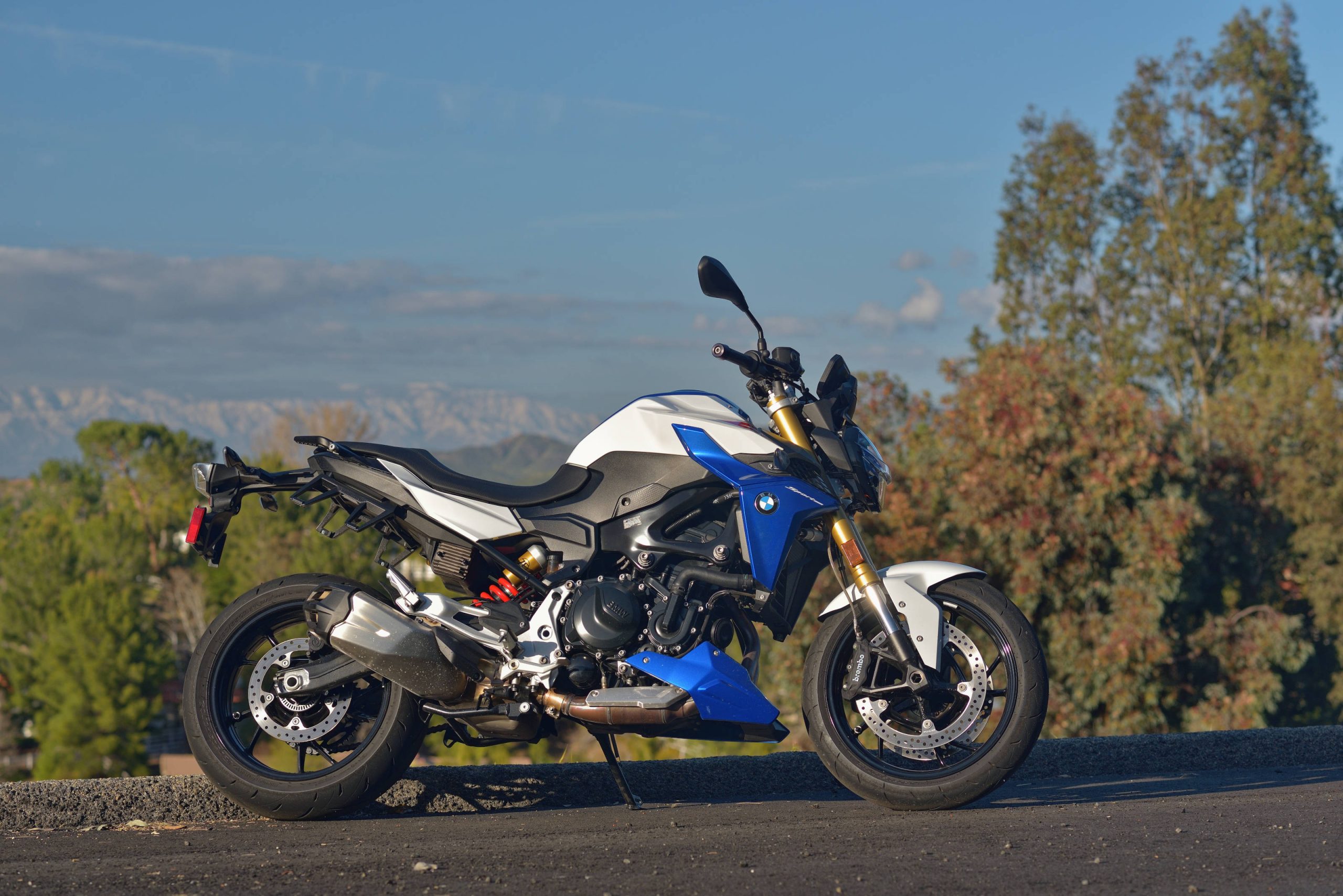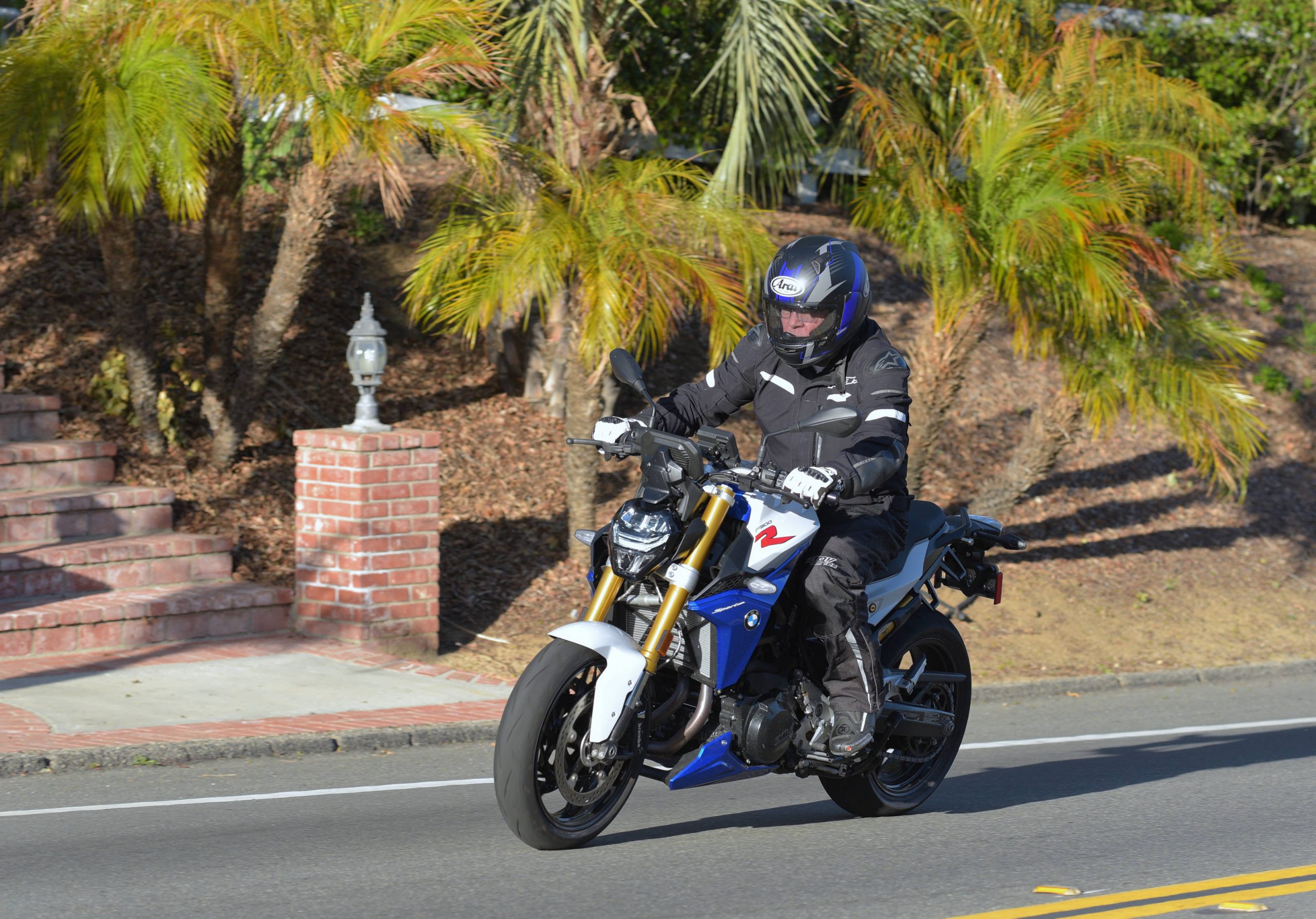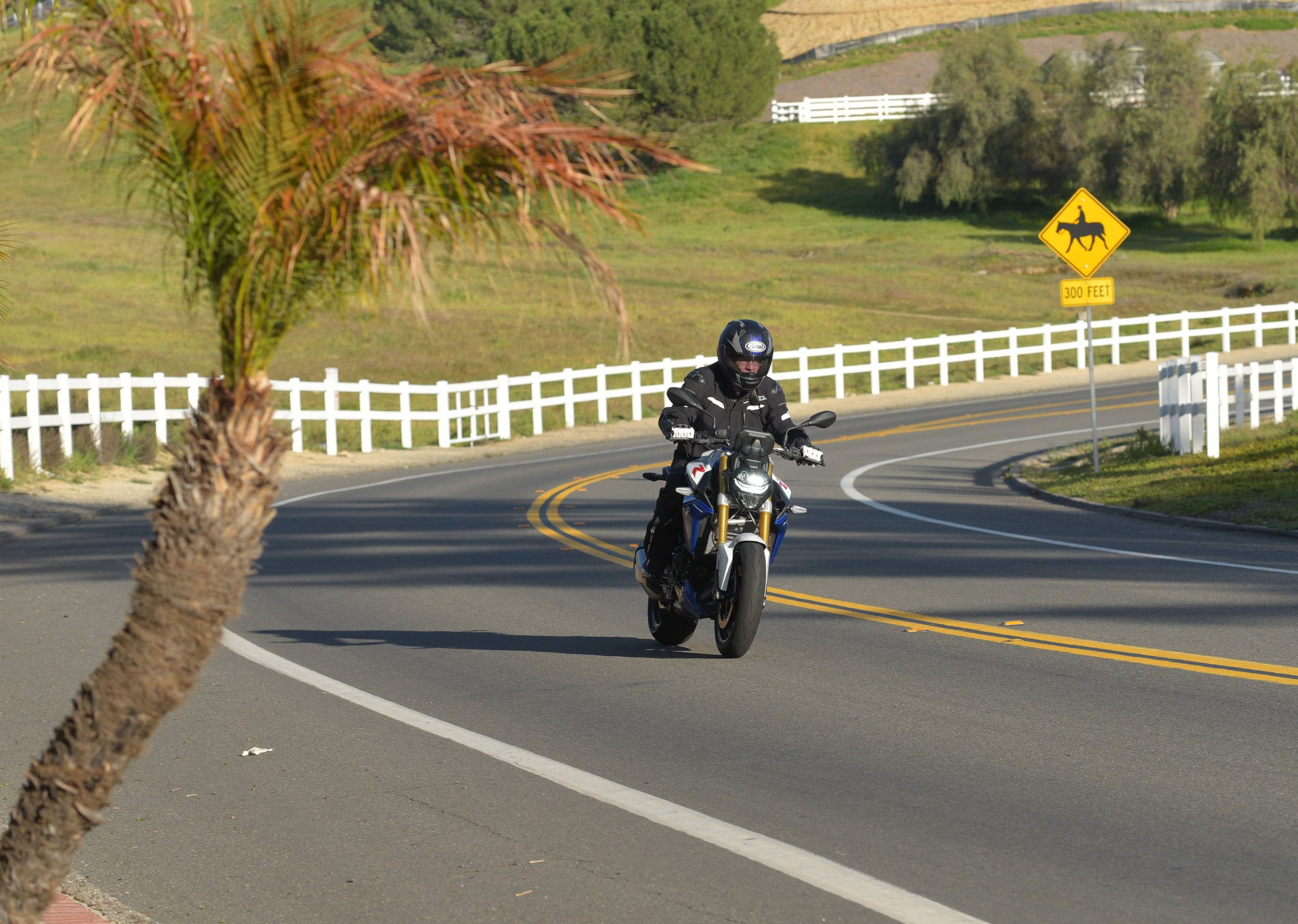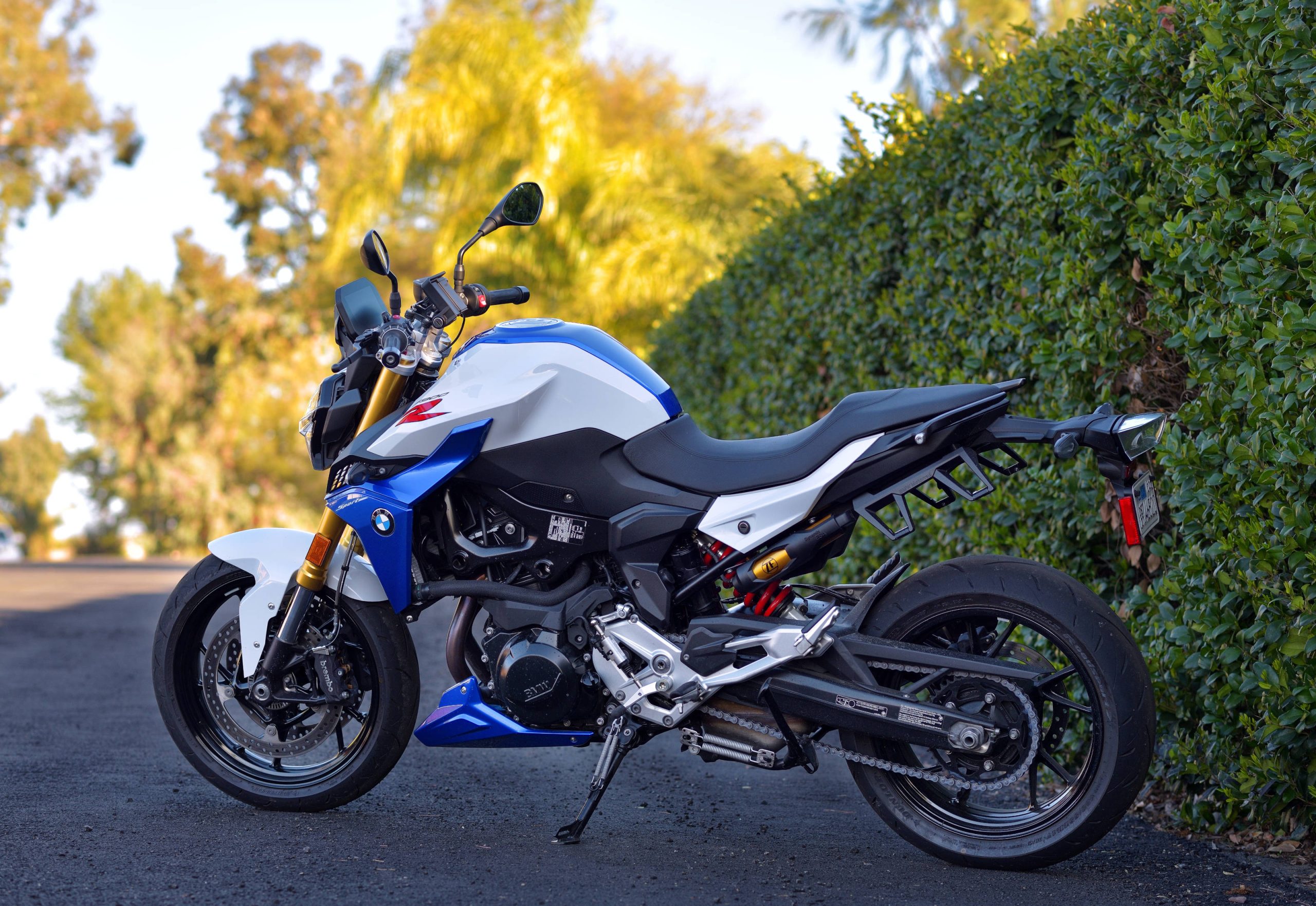BMW makes a relatively inexpensive parallel-twin powered standard that was redesigned for the 2020 model year with a 270° crank. The F 900 R displaces 895cc and makes a claimed 99 hp at 8,500 rpm and 67 pound/feet of torque at 6,500 rpm. Just about all you need for street riding
The bike is also relatively light, coming in at 465 pounds with the smallish 3.4 gallon fuel tank topped off. For this class, it has relatively standard tire sizes with a 120/70 x 17 in the front and a 180/55 x 17 in the rear. Competitors, as you might guess, include the similar displacement, and quite popular KTM 890 Duke
The BMW features a steel frame and non-adjustable front fork with 5.3 inches of travel. The rear shock, in standard form, offers only spring pre-load and rebound damping adjustments with 5.5 inches of travel.
Radial mount Brembo calipers squeeze two 320 mm discs in front, while a rear single disc is 264 mm. ABS is standard on all of the trim levels.

Lights are LED, and a modern 6.5 inch TFT display is utilized. The display is the center for control of a tremendous amount of information and electronic adjustability.
As you might expect from a modern BMW, there is a long list of accessories and options. Our test unit was top drawer, with keyless ride, heated grips, cruise control, dynamic electronic suspension adjustment (with electronically adjustable rear pre-load), what BMW calls “Ride Modes Pro“, which adds Dynamic modes to the standard Rain and Road settings. Also on our test unit was cornering ABS and dynamic brake control. I could tell you how to control all of this from the handlebar switches, but you might fall asleep and leave this article unfinished.
The dynamic electronic suspension on our bike, and other F 900s with the options maxed out, is only on the rear shock. The front fork remains a non-adjustable unit.
Our test unit was fitted with Dunlop Roadsport 2 tires, which offered decent grip and feedback.

The riding position, as you can see from our photos, put our 5‘11“ editor in a reasonably comfortable, upright position. The foot pegs are relatively high and rearward for a standard- style motorcycle, however, and taller riders with longer inseams might find the position a bit tight.
The first thing you notice riding the F 900 R is the engine performance and character. In short, it is excellent. Fueling is well tuned to provide progressive, linear power, and the amount of torque from as little as 4,000 rpm is impressive. For street riding between 5,000 rpm and redline, power is always available and meaty. The engine character, as you might expect from a parallel twin with a 270° crank, is pleasing, and those power pulses help the rider understand a connection with the contact patch on the rear tire.
Once I figured out how to adjust the electronically controlled rear shock, I was quite pleased with the handling. The bike was under-steering in stock settings, so I added, pre-load by selecting “rider plus luggage“ for the rear shock. This put a bit more weight on the front end, and the handling improved dramatically.

The standard Road setting for the rear shock was too soft and wallowy for aggressive riding, but once I switched to Dynamic mode, the dampening tightened up, and the bike was a blast attacking twisty roads.
The engine may not have the peak horsepower to compete with KTM‘s 890 Duke R, but it doesn’t feel that far off, and the low-end and mid-range might actually be a tad healthier on the BMW.
BMW has not changed the price of the base model since its introduction in 2020. It is stated as $8,995 US MSRP. The trick might be in finding a base model here in the United States. We hear from readers, and others, that most dealer bikes are optioned, at least to some extent. The premium package added $2,500 to the tab for the 2022 model year, but BMW seems to change these prices, and options quite frequently. The newly announced 2024 model is identical to our test bike, from a performance perspective, but option packages can vary when it comes to what is included, and what it costs. Take a look at BMWs website for details.
The bottom line is BMW has produced a fun, relatively affordable, parallel twin with plenty of performance and practicality. Our niggles include a seat that is comfortable for an hour or so, but then feels too hard, and the foot peg position, which could be a bit high and uncomfortable for taller riders with a longer inseam. Have a sit on one of the bikes at a dealership and draw your own conclusions about the ergonomics.

You can skip to the end and leave a response. Pinging is currently not allowed.

